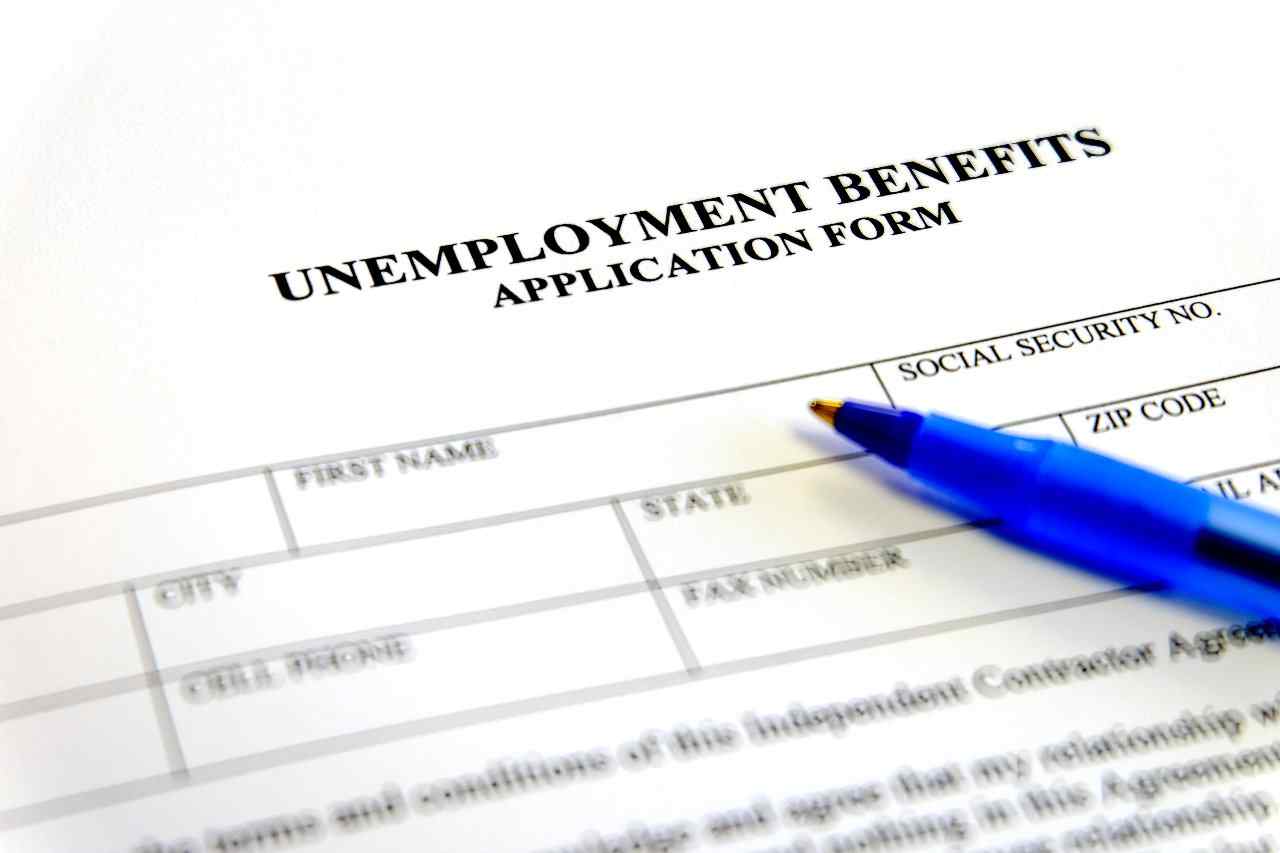What to Do If You Get Fired and Have No Money: A Survival Plan
Following an unexpected layoff, you’ll be feeling a variety of emotions, with shock and fear likely being the main ones. We’re here to reassure you that it’s completely normal. This period will undoubtedly be tough if you have little to no money, but you can navigate through it.
 If you’re wondering what to do when you lose your job and have no money, the first step is to create a survival plan and manage your finances. We’ll cover these immediate steps, as well as unemployment and government benefits you can explore.
If you’re wondering what to do when you lose your job and have no money, the first step is to create a survival plan and manage your finances. We’ll cover these immediate steps, as well as unemployment and government benefits you can explore.
Losing your job can be a temporary setback, but with our actionable advice and resources, you can regain stability and take control of your situation.
Review Your Financial Situation
As the reality of losing your job begins to set in, you may be thinking to yourself: I lost my job and have no money. What do I do? Your first order of business is to manage your finances and create a financial plan to hold you over until you can secure a new job.
Receive Final Compensation
After your employer delivers the news, they are required to disburse your final paycheck in accordance with federal and state laws. Under the Fair Labor Standards Act (FLSA), all employers must pay you for the full hours you worked up until the date of termination. However, some states may also require the employer to pay you out for unused vacation time.
Depending on state law, the employer may be required to send you your final paycheck immediately after termination or within a few weeks. Some employers also offer severance packages, which may include a lump sum payment.
Calculate Your Financial Reserves, Expenses, Debts and Other Income
After you receive your final paycheck or severance package, you should calculate how much money you actually have and what financial obligations you must meet. Doing so will help you create a monthly budget that ensures all your necessary expenses are covered.
Here’s how to calculate your financial reserves:
- Determine how much you have in your bank account, primarily your checking account. Your final check should also be taken into account.
- Calculate your savings and emergency funds.
- Add up all your monthly expenses, including your debts. This will give you a rough idea of how much you spend each month on necessities and fixed expenses.
- Add up your checking and savings account balances and divide them by your monthly expenses. This will help you determine how many monthly expenses you can currently cover.
- If you received a stipend, include this in your account balance. Then, divide by your monthly expenses to see how far you can stretch your severance package.
Communicate with Creditors
If you’ve lost your job and have high-interest debt obligations, the financial pressure can be even greater. But don’t worry; most lenders offer deferment or forbearance options. After losing your job, contact your lender immediately and explain your situation.
They may offer you the option to defer payments for a certain amount of time until you secure another job or reduce interest rates or minimum repayment amounts.
Apply for Unemployment Benefits
The number one source you could turn to if you lost your job and need money is unemployment benefits. However, there are some eligibility requirements regarding who is approved for unemployment. First, you must be employed for a specific period of time and meet the wage requirement. Second, the loss of employment must result from termination for a just cause or because you quit.
 Typically, those who were let go due to downsizing or lack of available hours are eligible to apply for unemployment benefits. If approved for unemployment benefits, you may receive a portion of your salary for up to 26 weeks. The amount you may be eligible for depends on the state you reside in and how much you made while you were employed.
Typically, those who were let go due to downsizing or lack of available hours are eligible to apply for unemployment benefits. If approved for unemployment benefits, you may receive a portion of your salary for up to 26 weeks. The amount you may be eligible for depends on the state you reside in and how much you made while you were employed.
Additionally, those approved must submit regular reports regarding their employment status and non-government income. They must also state whether they can work and are willing and ready to accept immediate work. These reports are necessary to continue receiving unemployment benefits.
Following a job loss, your main worry will be how to pay bills with no money. That’s why your first order of business was to calculate your financial reserves and monthly expenses. In the months following a job loss, you will undoubtedly need to cut back on extra spending on non-essential items.
Instead, you should focus on allocating your funds to fixed expenses and necessary variable costs. These would include:
- Rent or mortgage payments
- Groceries
- Utility bills (electricity, water, gas, Internet, phone)
- Car insurance and lease payments
- Debt payments if you haven’t negotiated a deferment plan
Prioritizing essential costs ensures your money is going farther towards necessities. Covering your basic needs should take precedence until you secure stable employment and receive at least two months of pay.
Losing a job comes as a surprise to many, and you might not be financially prepared for it. In the event that you don’t have enough savings, you might turn to loan and credit options to help meet essential needs.
One option is to take out a small sum personal loan to help cover basic expenses like rent, groceries, or utilities. If you’re eligible, you could borrow up to a few hundred dollars within a few days.
However, be wary that personal loans come with high interest rates and short repayment terms. As a result, this option should only be used as a last resort.
Another option is to utilize credit card balance transfers. You’ll be required to pay a fee to transfer an outstanding balance, which tends to be around 3% to 5% of the amount being transferred.
A balance transfer can be a good idea if you have high-interest debts on other cards. You can essentially forgo paying these debts without accruing more interest. You can also use the 0% interest card for groceries, utilities, and other necessities without gaining interest.
Keep in mind that after the introductory period is over, the 0% interest will revert to the card's standard rate.
In addition to unemployment benefits, many people who lost their jobs and have no money to cover necessities can turn to government assistance programs. These programs can help with groceries, rent, bills, and health insurance.
- Temporary Assistance for Needy Families (TANF)
Those who qualify for TANF receive assistance with food, housing, home energy, and childcare costs. Additionally, the program offers job training to help families find work and achieve independence.
To be eligible for TANF, individuals must meet federal and state requirements. First, applicants must be unemployed, underemployed, or have a very low income. Additionally, applicants must also meet one of the following criteria: be at least 18 years old and head of the household, have a child under 18 years old, or be pregnant.
- Supplemental Nutrition Assistance Program (SNAP)
SNAP helps families by supplementing their grocery budget. Eligibility depends on the size of the family and income. To qualify, the household income needs to be below 130% of the national poverty line.
The funds can be used to purchase food items from retail stores and some restaurants. However, SNAP benefits cannot be used to purchase alcoholic beverages, vitamins, medicine, nonfood grocery items, or household supplies.
- Low Income Home Energy Assistance Program (LIHEAP)
If you’re unemployed and can’t pay bills, you may apply for LIHEAP to help cover energy costs, such as paying bills, weatherization, and minor energy-related home repairs. Qualification requirements vary by state; however, most families that are eligible for SNAP or TANF may also be eligible for LIHEAP.
Eligibility for LIHEAP is based on income and household size. For instance, the maximum qualifying income for a family of four is $41,625 annually. If you don’t qualify for LIHEAP, you can contact your service provider to see if they can offer an extension or an installment plan.
- Special Supplemental Nutrition Program for Women, Infants, and Children (WIC)
Unemployed expectant mothers can apply for WIC to receive assistance with food and healthcare costs. Pregnant women also have access to parenting and counseling classes through WIC. To be eligible, you must be pregnant, nursing, or up to six months postpartum with children under the age of five.
 To qualify for WIC, your income needs to be below 100% to 185% of the federal poverty line. Expectant mothers who already qualify for TANF and SNAP may automatically be eligible for WIC.
To qualify for WIC, your income needs to be below 100% to 185% of the federal poverty line. Expectant mothers who already qualify for TANF and SNAP may automatically be eligible for WIC.
- Medicaid and the Affordable Care Act Health Insurance Marketplace
Low-income families can apply for Medicaid, which is a public program that offers health coverage. Eligibility for Medicaid is largely income-based. Generally, families and individuals need to be 100% to 200% below the federal poverty line to qualify.
Those who are unemployed can obtain health coverage through the ACA. The ACA aims to provide affordable health insurance to the uninsured.
- Lifeline
The Lifeline program offers qualified individuals and families assistance with paying for landline and wireless phone services. Some may even be eligible for a free phone.
To qualify, income must fall 135% below the federal poverty line. Additionally, if you already qualify for SNAP or Medicaid, you may automatically be eligible for Lifeline.
To search for government assistance programs available to you, browse the U.S. government website.
Although 401(k) loans are typically reserved for current employees, there may be some alternatives for the unemployed. If you can’t find a job and need money for immediate necessities, you may qualify for a hardship withdrawal. You will need to meet specific requirements and provide evidence of immediate financial need. These circumstances include:
- medical expenses
- purchase of a residence aside from mortgage payments
- eviction or foreclosure prevention
- home repair costs
- costs related to losses incurred at residence or work due to a federal emergency
There are additional rules regarding hardship withdrawals that you would need to consider, such as:
- the minimum requested amount is $1,000
- you can only receive two hardship distributions per plan year
- you can only withdraw funds that you have invested as a salary contribution
- the requested amount cannot exceed the amount needed to relieve hardship
- you must have an immediate need, even if the hardship was reasonably foreseeable or voluntary
Also, keep in mind that hardship withdrawals are subject to income tax and a 10% early withdrawal penalty. Lastly, the hardship distribution cannot be repaid to the 401(k) account, so the amount in the account will be permanently reduced.
If you have lost your job due to the company going under or downsizing, you may be able to utilize your high-income skills as a freelancer until you secure another full-time position. For instance, some of these high-income skills may include software engineering, graphic design, coding, and video editing.

Upwork and Fiverr are among the most popular freelancing sites that you can get gigs through. People on the platforms post examples of their work to gain interested clients. These sites also offer you the flexibility to set your own rates and hours.
Research has found that 60% of people experience anxiety due to decreased financial security. Surely, this is true of individuals who have recently been laid off. However, despite the overwhelming feeling, you are not completely out of options or money.
The first step is to apply for unemployment benefits, followed by government assistance programs. This aid will usually last several months, giving you time to search for new employment and get back on your feet.
FAQ
Here’s some additional information to help put your mind at ease after a job loss:
What Should I Do When I'm Broke and Unemployed?
There are several options you can explore if you are broke and unemployed, including:
- Offering your services and skills as a freelancer online
- Exploring government assistance programs
- Applying for unemployment benefits
- Getting professional financial and employment advice
What Happens if You Have a Loan and Lose Your Job?
If you have a loan and lose your job, contact the lender immediately to negotiate a deferment plan or an interest and minimum payment reduction option.
What Should I Do If I Lose My Job and Can't Cover Expenses?
If you’ve lost your job and can’t afford necessities, you should explore government assistance programs. Qualifying individuals can receive funding to help with food, healthcare, housing, and utility costs.
Are There Differences Between Being Laid Off and Being Fired That Affect Eligibility for Unemployment Benefits?
Yes, your eligibility for unemployment benefits may depend on whether you were laid off or fired. If you’re laid off because of downsizing, lack of work, or budget cuts, you’ll be eligible for unemployment benefits.
If you’re fired due to poor performance, you may still qualify. However, if you were fired for misconduct or violating company policies, you’ll be ineligible.





